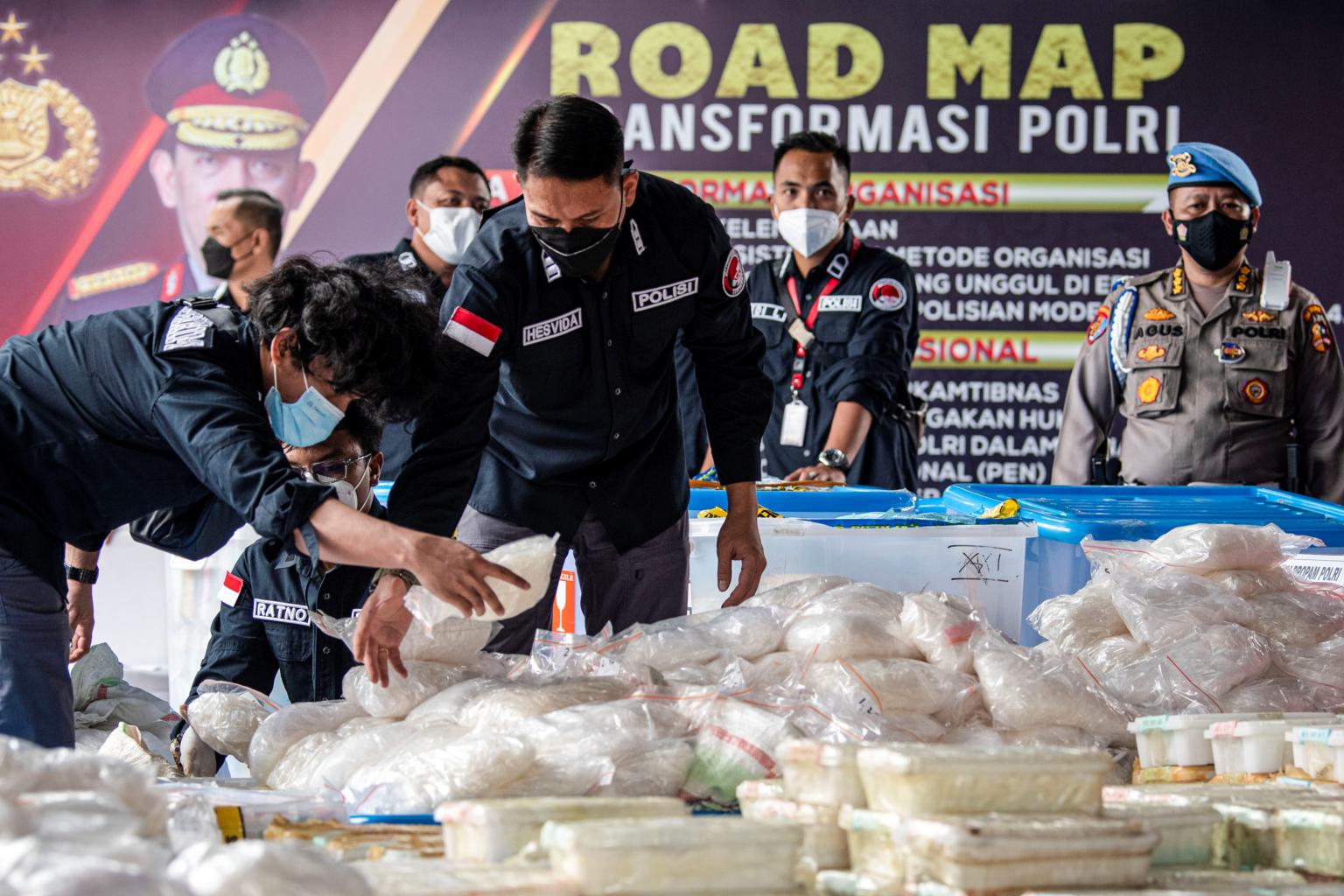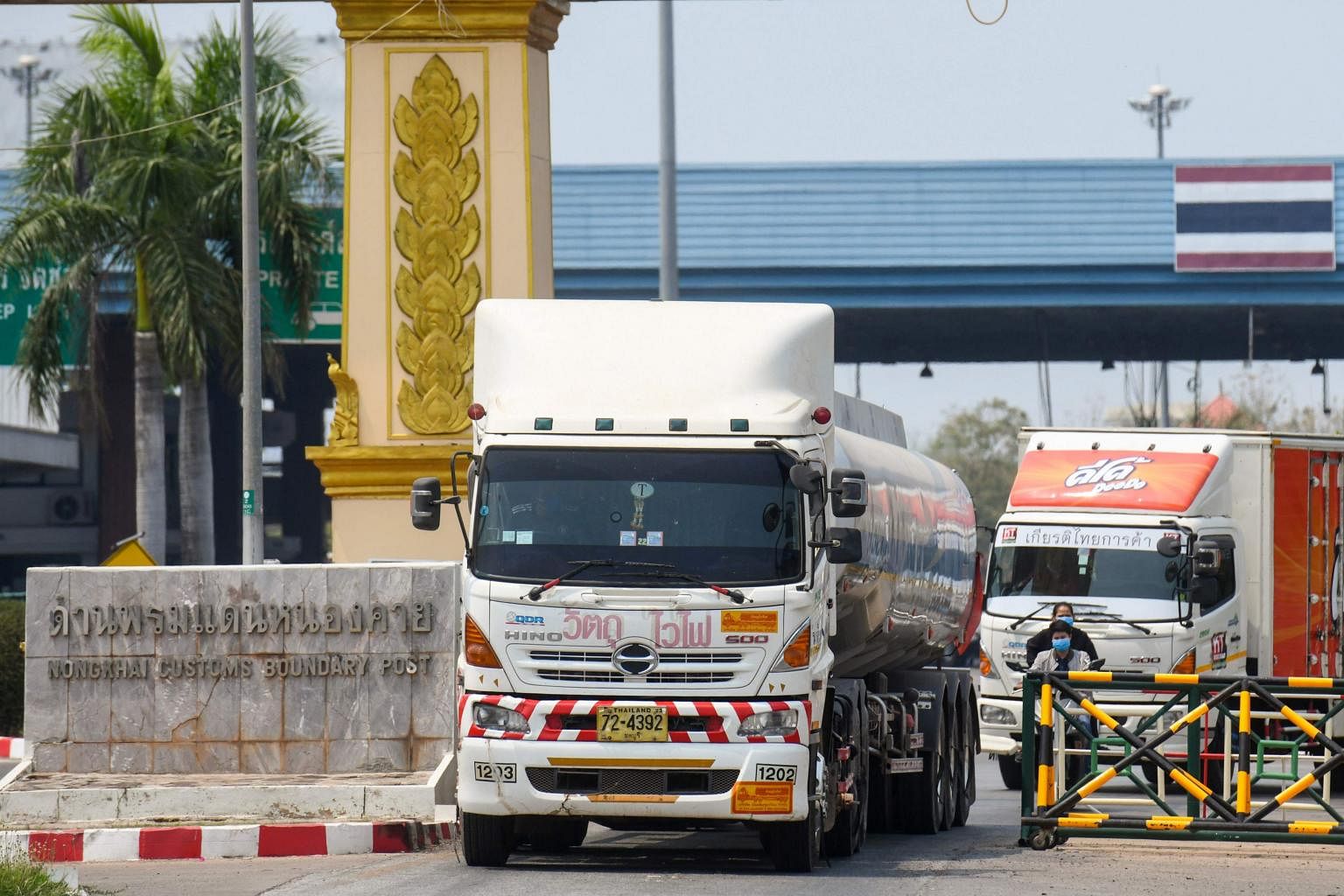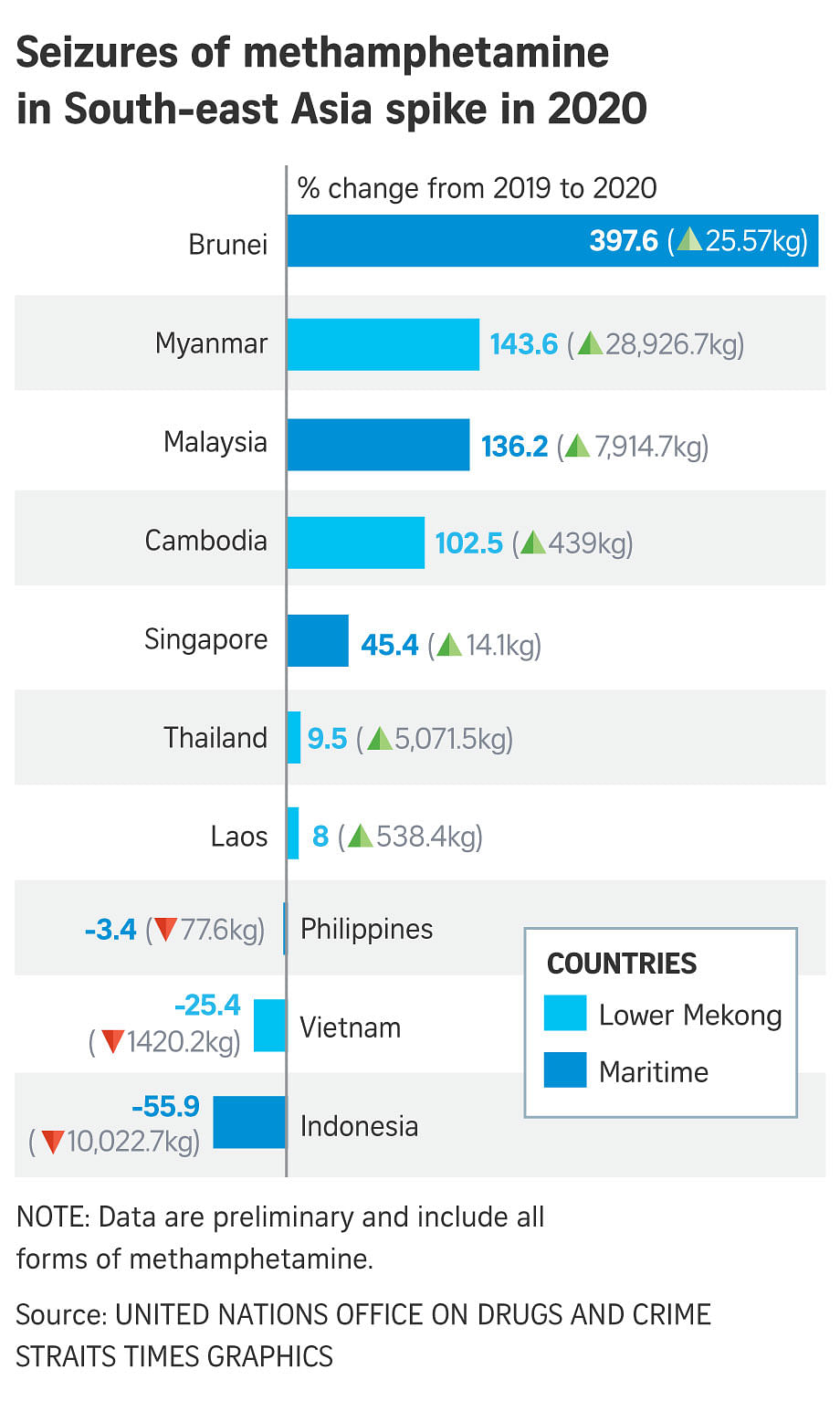Asia's illegal drug trade thriving even as Covid-19 pandemic batters economies
Sign up now: Get insights on Asia's fast-moving developments

In this photo taken on April 28, 2021, Indonesian police officers arrange 2.5 tonnes of seized crystal methamphetamine in Jakarta.
PHOTO: REUTERS
Follow topic:
NEW YORK - Experts tracking the illicit drug trade in Asia have, for some time, likened it to a tsunami - and it is not stopping.
In fact, while the Covid-19 pandemic cut deep into the regular economy across the region, organised crime thrived, producing and distributing synthetic drugs in record quantities.
A new report from the United Nations Office on Drugs and Crime (UNODC) confirms that production and trafficking of synthetic drugs - overwhelmingly methamphetamine - surged last year.
Available quarterly data from East and South-east Asia showed a drop in seizures in the second quarter of 2020 during the height of the pandemic, the report said.
But "seizures quickly rebounded from the third quarter, demonstrating the flexibility of organised crime groups to adapt to change and take advantage of porous borders in the region".
"Seizures of all forms of methamphetamine, namely tablet, crystalline, liquid and powder, reached their highest level in a single year in 2020", according to the report released on Thursday (June 10).
Seizures of methamphetamine in the region amounted to approximately 170 tonnes last year, a 19 per cent increase over the 142 tonnes seized in 2019.
This was primarily driven by increases in five lower Mekong countries - Cambodia, Laos, Myanmar, Thailand and Vietnam - which accounted for 71 per cent of total seizures.
The meth trade saw continued growth in East and South-east Asia last year, with a concentration of supply and seizures in the Mekong region.
No new figures were given on the regional meth market value, but the last estimate two years ago, which included Australia and New Zealand, put the value at US$61 billion (S$81 billion).
Also of note was the emergence of production and seizure of labs in Cambodia, where the authorities dismantled five clandestine synthetic drug laboratories in 2020 alone.
Significant volumes of methamphetamine were trafficked through Laos to Thailand and Vietnam for both market distribution and transshipment.
The report also notes a continuous flow of methamphetamine tablets from Myanmar to South Asia.
Last year, 36.4 million methamphetamine tablets were seized in Bangladesh.
More drugs, lower prices, more users
The supply surge has fed rising usage.
"Thailand has reported a tenfold increase in the number of crystal methamphetamine users between 2016 and 2019, and price data reported by Cambodia and Malaysia showed decreases from 2019 to 2020," the report says.
The wholesale price of crystalline methamphetamine in Cambodia, Malaysia and Thailand fell in all three countries in 2020.
In Cambodia, it fell from US$8,000 per kg in 2019 to US$7,000 per kg last year. In Malaysia, it fell from US$12,000 per kg to just under US$10,000 per kg, and in Thailand, it fell from US$10,000 per kg to just over US$8,000 per kg.

Mr Inshik Sim, a UNODC official based in Bangkok, said: "The drop in the price of methamphetamine in South-east Asia is a serious problem, clearly showing supply-reduction strategies have not worked as intended.
"At the same time, only very small quantities of controlled precursors are being seized, which can be attributed at least in part to the use of pre-precursors and non-controlled chemicals," added Mr Sim, the regional coordinator for the UNODC's Global Synthetics Monitoring: Analyses, Reporting and Trends Programme, which gathers and analyses data on synthetic drugs.
Meth and more
The continuing methamphetamine market expansion is not the only worrying development, the report said.
Production and trafficking of ketamine have also increased.
In January, 13 people died in Thailand as a result of using a product locally called "K-powdered milk" that was presented to users as ketamine, UNODC said. An autopsy found that the product contained ketamine, diazepam and caffeine in varying combinations and purity.
"The emergence of potentially harmful new psychoactive substances, including synthetic cannabis and designer benzodiazepines, has added to the complexity of the situation," the report added.

Mr Jeremy Douglas, UNODC's regional representative for South-east Asia and the Pacific, told The Straits Times: "There is no getting around the fact that the Mekong has a very serious organised crime problem - and the Golden Triangle remains the heart of the problem.
"They are effectively using the region's fragmented and, in places, dysfunctional governance to produce and traffic drugs in enormous volumes, and to move and hide huge amounts of money," said Mr Douglas, who is based in Bangkok.
"The region really needs to shift diplomatic, policy and law enforcement efforts towards addressing the conditions that criminal syndicates use to their advantage, to get a handle on the chemical trade and trafficking that underpins the synthetic drug business, and to prioritise financial investigations."

